2014 CES: A First-Timer's View
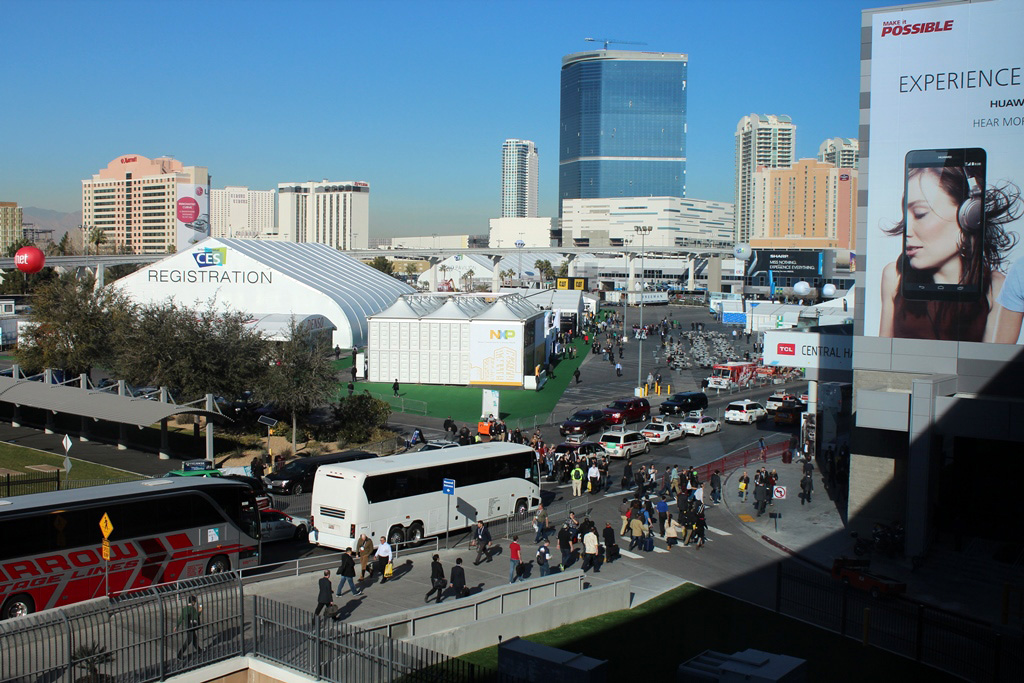
This year’s International CES outgrew the LVCC exhibition halls and spread out onto neighboring parking lots.
LAS VEGAS — While I’m a veteran of many, many trade shows over the last 40 years or so, I’ve never done the International CES before. So when the opportunity was offered to attend this year’s show I decided to go for it and brave the crowds estimated to be somewhere in the 150,000 range.
So there I was amid a sea of spectators and exhibitors that are spread over some 2 million square feet of Las Vegas Convention Center floor space and overflowing into circus-sized tents and neighboring hotels. So other than a lot of walking and sensory overload, what are my takeaways?
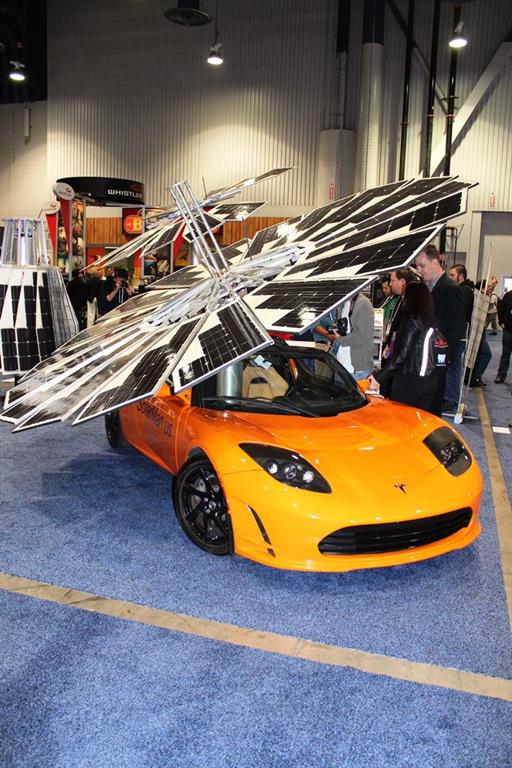
Automobiles were in abundance at the show and not just in parking lots. This Tesla sports a photovoltaic charging panel that overshadows the car itself. There was only a limited amount of time to make the rounds. The exhibit floors were open for a total of 33 hours and there were more than 3,500 exhibitors. If I did the numbers correctly, that works out to about 34 seconds of face time with each exhibitor, assuming, of course, that you can instantly transport yourself from one booth to another and don’t stop to eat or go to the bathroom. I elected to bypass such interesting hot-ticket consumer items such as biometric-controlled gun safes, Internet-connected pill dispensers, high-tech cellphone cases, driverless cars and the like and try and home in on the gear that more or less has a tie with broadcasting.
Just as with other industry shows in the past year or so, 4K video was king at CES. Good old 720p and even 1080p are down in the noise. Just about everyone showing video had a 4K sign posted near by the display. Superlatives were stacked high and deep: Biggest 4K, brightest 4K, extended contrast 4K, exalted color gamut 4K and the like.
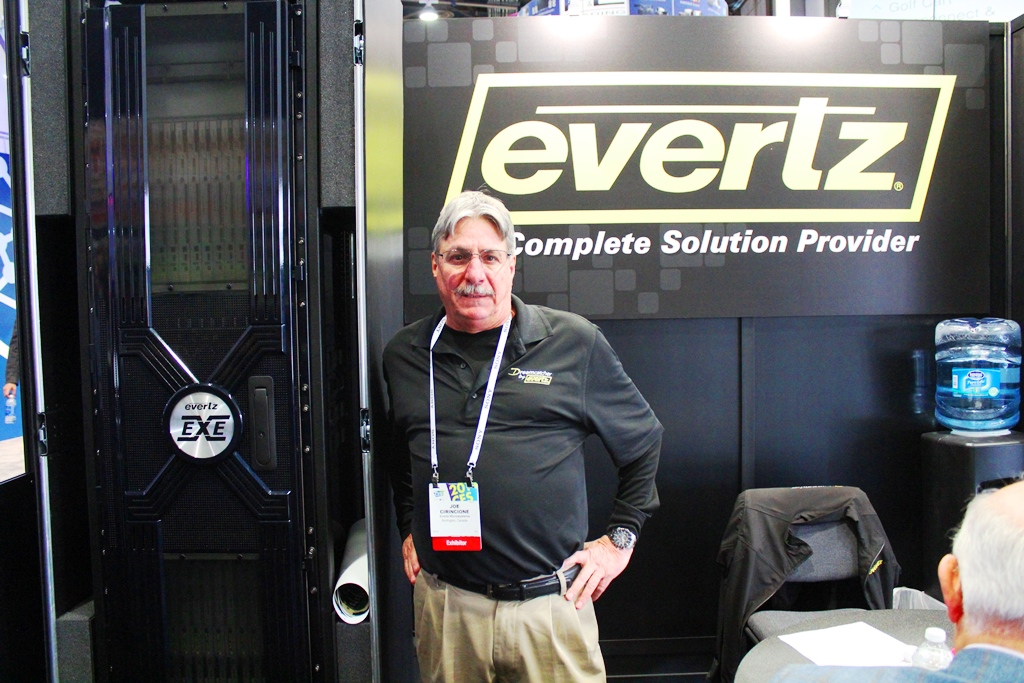
Video equipment manufacturer Evertz was at the show, even they produce no consumer gear. However, according to Joe Cirincione, Evertz vice president sales, U.S. Sports and Entertainment, CES is always good for business. Speaking of the first of these, size does seem to matter and the winner appeared to be Samsung and their 110-incher. Someone has already remarked that setting it up in your TV room would be like mounting a king-size mattress on the wall.
While Samsung may have snagged the single-screen display prize, just down the hall, LG was drawing them in with a super colossal 3D display. (And we all thought 3D was just about dead!). Actually, the LG picture show drew such crowds of gawkers that it was difficult to navigate through and around the Central Hall door near the gargantuan display.
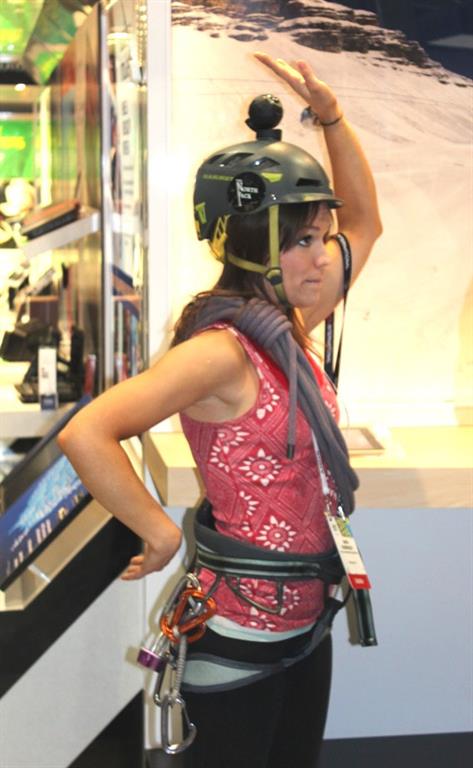
Fashion statement or the latest in wearable video cameras? So how big is LG’s display? Seems nobody had a ready answer. I checked in at the LG information booth several times and the best they could come up with was that the display was a composite of 140, 55-inch flat screens stacked seven high and 20 wide. I decided to do the numbers on this one and here’s what I came out with. Assuming the 55-inchers are 16:9 aspect ratio displays, they would be 48 inches across and 27 inches high. Seven atop one another works out to something just under 15 feet high and placing 20 of them side-by-side makes it just shy of than 80 feet across. (No way is this puppy ever going to fit in my living room—well maybe if I took the roof off and pushed out one of the walls!)

If it’s curved can it still be called a “flat” screen? Another trend this year was the “curved” screen. Just about all of the major players are showing “flat” screen displays that decidedly are not flat. I’m told that the reasoning behind this is that viewers, especially gamers, find a curved image more immersive, and I have to admit that pulling the sides back a bit does seem to add a little more depth to the picture.
Speaking of innovative screen types, some companies are even referring to theirs as “bendable,” even though I didn’t witness any demos with strong-armed people putting the displays to the torque test.
Toshiba was showing another “different” display screen too—billing is as “Extra Wide Ultra HD 5K.” Not a typo. The aspect ratio is a whopping 21:9.

This “wrist watch” style wearable video display from Sony was likely the smallest of its kind at the show. It’s shown here with the companion “Action Cam.” On the other end of the spectrum, Sony showed off a wristwatch-like video display. There was no diagonal screen measurement stated, but one of the booth people and I guesstimated that it was probably between 1.25 and 1.5 inches diagonal. This is about the smallest video display I’ve seen outside of some LCD viewfinders. The Sony “watch” display was not really a television set, but intended to be wirelessly “paired” with an equally miniscule “Action Cam” for observing things distant. The system allows the display of video from up to five different sources. Shades of Dick Tracy and his “2-way wrist TV.”
Another interesting element of the CES was the amount of “retro” on display. A lot of the old familiar brands were there with new owners attached. I saw familiar logos from Sylvania, GE, and RCA. The latter was associated with both off-air television antennas and a number of mobile DTV sets, including a 3.5-incher.
The professional video industry's #1 source for news, trends and product and tech information. Sign up below.

Automobiles abounded at the show too-- this 1939 12 HP Crosley was probably the oldest one there. Another new company operating under a very old brand was Crosley. They arrived with complete range of 1950s-style record players (for playing back vinyl; not CDs or music downloads) and also several table radios. While these retro record players and radios all use new 21st century technology innards, the Crosley folks also brought along a restored 1940s Crosley automobile, which sported an original two-cylinder, 12 horsepower engine. It was getting a lot of attention too.
Picking back up on the 4K video trend that I mentioned earlier, there was another retro name here that was attracting attention—Polaroid. The instant picture people have been reinventing themselves and were at the show with both a new generation of instant picture cameras—producing both photochemical pictures and electronic images—as well as a sub-$1,000 4KTV. It uses LED technology to produce a 50-inch picture with a 120 Hz refresh rate, accepts three HDMI sources and lists for $999.99. It’s supposed to be in the stores this spring.
Polaroid also was showing several tiny HD camcorders, one of these, the iD820, does 1080p capture, is a half-inch wide and weighs less than four ounces, lithium ion battery included.
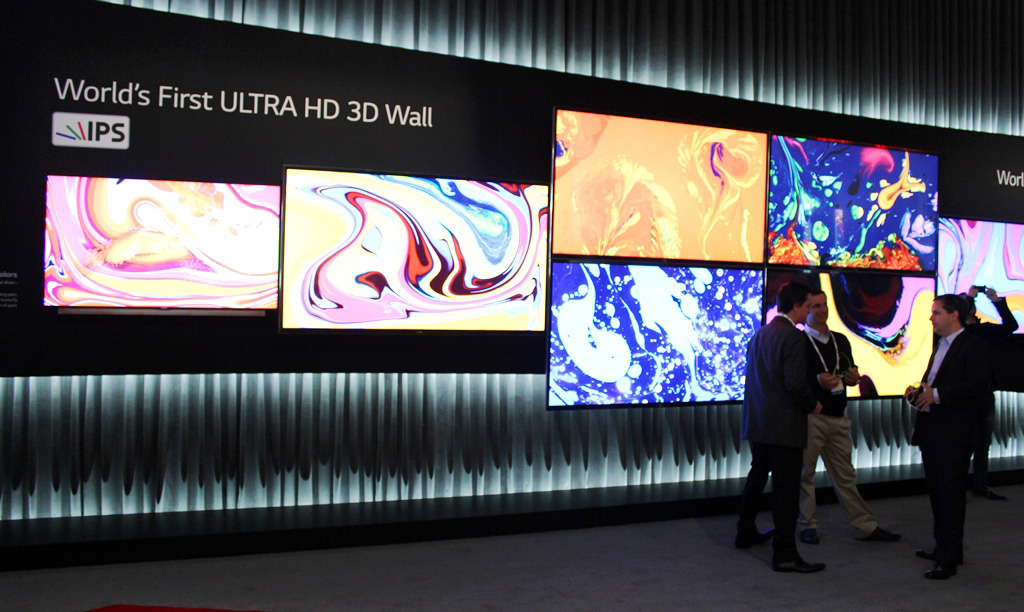
“World’s first,” “biggest,” “brightest,” “best ever”--they were all there at the 2014 CES. I also had a demo of some third-generation speech recognition too; this was from the Conexant chip folks. The ability to cut through room noise, television program audio even simultaneous conversations near the TV set was quite remarkable. It works with someone telling the TV what to do from as far away as 15 feet. LG has adopted the voice-control technology in its 2014 TV set lineup.
Maybe this could spell the end of the remote control.
James E. O’Neal has more than 50 years of experience in the broadcast arena, serving for nearly 37 years as a television broadcast engineer and, following his retirement from that field in 2005, moving into journalism as technology editor for TV Technology for almost the next decade. He continues to provide content for this publication, as well as sister publication Radio World, and others. He authored the chapter on HF shortwave radio for the 11th Edition of the NAB Engineering Handbook, and serves as contributing editor of the IEEE’s Broadcast Technology publication, and as associate editor of the SMPTE Motion Imaging Journal. He is a SMPTE Life Fellow, and a member of the SBE and Life Senior Member of the IEEE.

